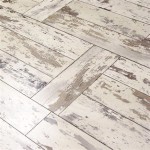Essential Aspects of Vinyl Plank Flooring Instructions
Installing vinyl plank flooring can be a rewarding DIY project that enhances the aesthetics and functionality of your home. To ensure a successful installation, it is crucial to pay attention to the detailed instructions provided by the manufacturer. Here are some essential aspects to consider:
Preparation
Proper preparation is key. Start by removing existing flooring, cleaning the subfloor, and ensuring it is level. Using a moisture barrier is recommended to prevent moisture from damaging the flooring. Allow the subfloor to dry completely before proceeding with the installation.
Acclimation
Allow the vinyl planks to acclimate to the room temperature and humidity for at least 24 hours before installation. This helps the planks reach their intended dimensions and prevents buckling or warping.
Planking Direction
Typically, vinyl planks are installed parallel to the longest wall of the room. However, you may choose a different direction based on your preference or the specific design of the planks.
Underlayment
Using appropriate underlayment is essential for sound insulation, moisture resistance, and comfort underfoot. Follow the manufacturer's instructions carefully to install the underlayment properly.
Expansion Gap
Leave an expansion gap around the perimeter of the room and around any obstacles like walls, columns, or pipes. This allows for seasonal expansion and contraction without causing damage to the flooring.
Locking System
Most vinyl planks feature a locking system that allows for easy and secure installation. Align the planks and angle them slightly to engage the locking mechanism. Tap the planks into place firmly but avoid excessive force.
Staggering Joints
Stagger the end joints of the planks by at least 6 inches to ensure stability and prevent buckling. This also helps create a more natural and cohesive appearance.
Cutting Planks
Use a utility knife or flooring cutter to cut the planks to the desired length. Measure and mark the cut accurately to ensure a precise fit.
Trim and Transition
Install baseboards and quarter-round molding to conceal the expansion gap and provide a finished look. Use transition strips to connect the vinyl flooring to other flooring types like carpet or tile.
Cleaning and Maintenance
Once the installation is complete, clean the floor using a manufacturer-recommended cleaner. Regular sweeping and mopping with a microfiber pad will help maintain the beauty and longevity of the flooring.
By following these essential instructions carefully, you can enjoy a durable, attractive, and low-maintenance vinyl plank flooring that will enhance the comfort and style of your home.

How To Install Vinyl Plank Flooring As A Beginner Home Renovation

Installing Vinyl Floors A Do It Yourself Guide The Honeycomb Home

How To Install Luxury Vinyl Plank Flooring Quick And Simple Casa Watkins Living

How To Install Vinyl Plank Flooring The Home Depot

Installing Vinyl Plank Flooring For Beginners Anika S Diy Life

Vinyl Plank Flooring Tutorial No Nails Glue Real Estate Kier

How To Install Vinyl Plank Flooring Diy Cost Breakdown With Underlayment

20 Tips For A Great Vinyl Plank Flooring Installation

How To Lay The Perfect Loose Vinyl Plank Flooring Tile Wizards

Why You Should Stagger Vinyl Plank Flooring When Installing








